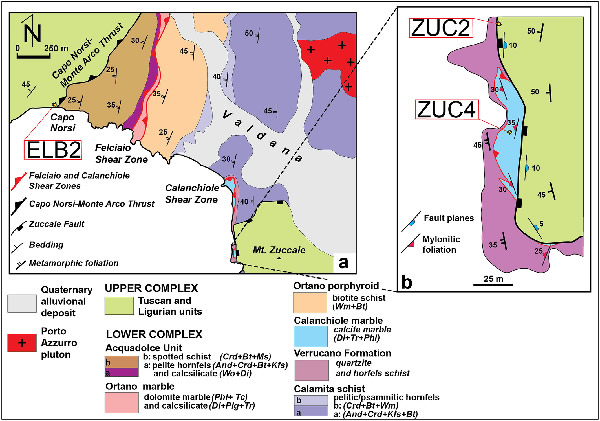New constraints on the evolution of the inner Northern Apennines by K-Ar dating of Late Miocene-Early Pliocene compression on the Island of Elba, Italy

Viola G., E. Torgersen, F. Mazzarini, G. Musumeci, R. van der Lelij, J. Schönenberger, & P.S. Garofalo (2018).
Tectonics, 37/9, 3229–3243, https://doi.org/10.1029/2018TC005182.
Abstract
The Northern Apennines (NA) orogenic wedge formed during Oligocene‐Miocene convergence and westward subduction of Adria beneath the European Plate. Extension ensued in the Mid‐Late Miocene in response to Adria roll‐back, causing opening of the back‐arc Northern Tyrrhenian Sea. Whether extension continues uninterrupted since the Mid‐Late Miocene or it was punctuated by short‐lived compressional events, remains, however, uncertain. We used the K‐Ar method to date a set of brittle‐ductile and brittle deformation zones from the Island of Elba to contribute to this debate. We dated the low‐angle Zuccale Fault (ZF), the Capo Norsi‐Monte Arco Thrust (CN‐MAT), and the Calanchiole Shear Zone (CSZ). The CN‐MAT and CSZ are moderately west dipping, top‐to‐the‐east thrusts in the immediate footwall of the ZF. The CSZ slipped 6.14 ± 0.64 Ma (<0.1 μm fraction) and the CN‐MAT 4.90 ± 0.27 Ma ago (<0.4 μm fraction). The ZF, although cutting the two other faults, yielded an older age of 7.58 ± 0.11 Ma (<0.1 μm fraction). The ZF gouge, however, contains an illitic detrital contaminant from the Paleozoic age flysch deformed in its hanging wall and the age thus is a maximum faulting age. Removal of ~1% of a 300‐Ma‐old contaminant brings the ZF faulting age to <4.90 Ma. Our results provide the first direct dating of brittle deformation in the Apennines, constraining Late Miocene‐Early Pliocene regional compression. They call for a refinement of current NA geodynamic models in the framework of the Northern Tyrrhenian Sea extension.


Devi effettuare l'accesso per postare un commento.